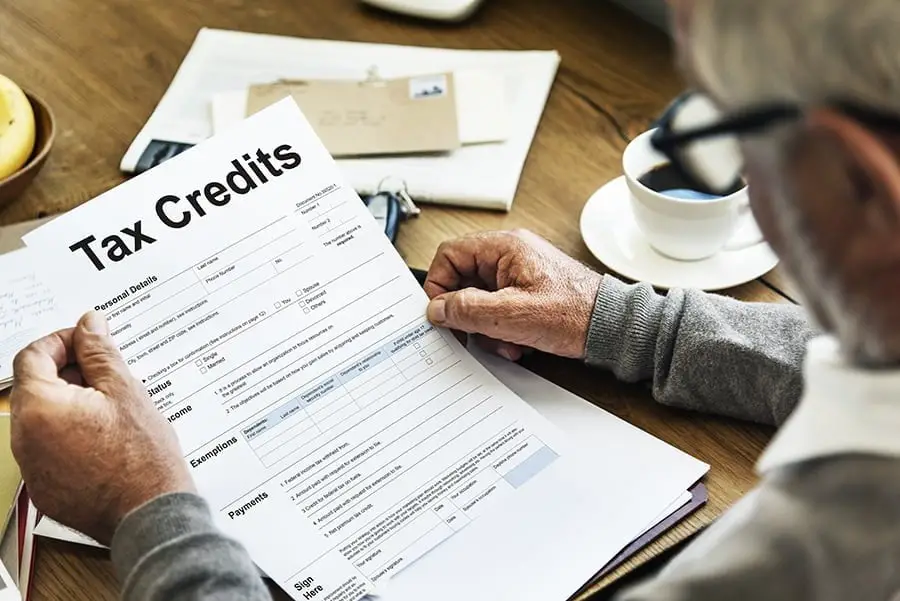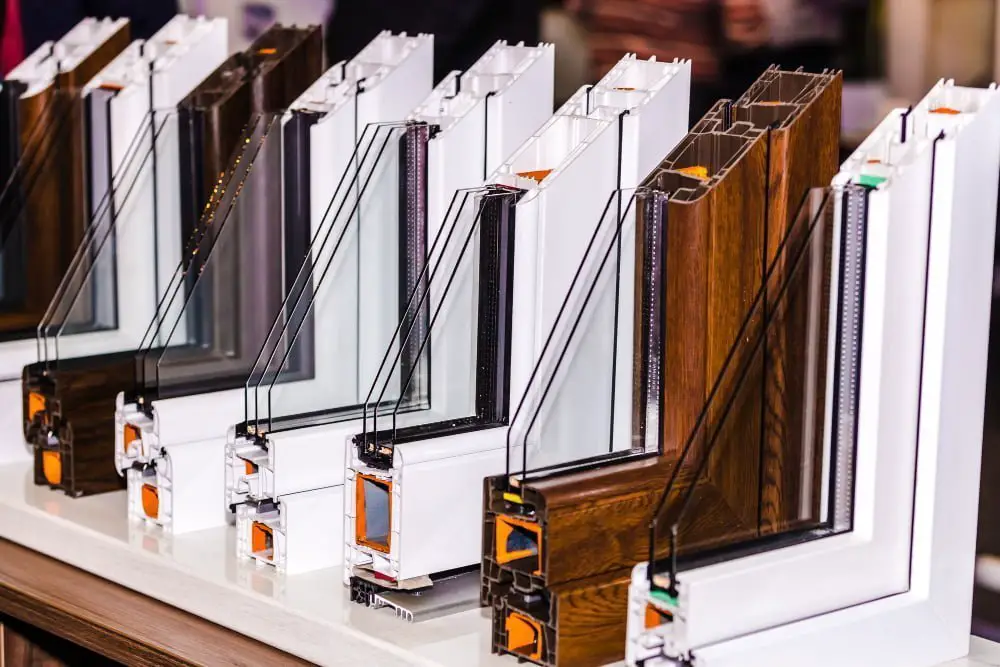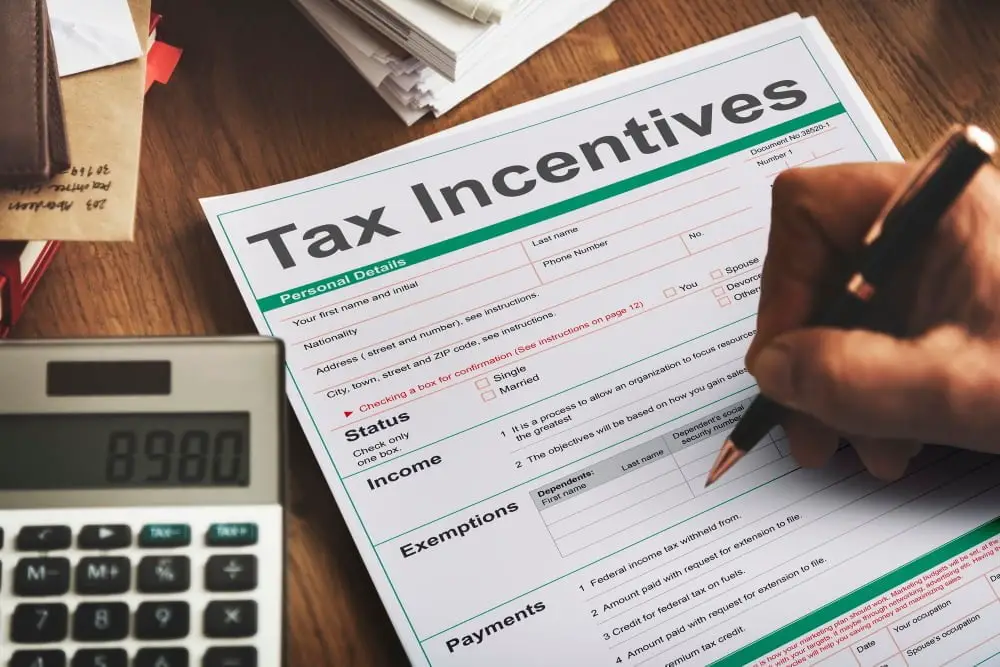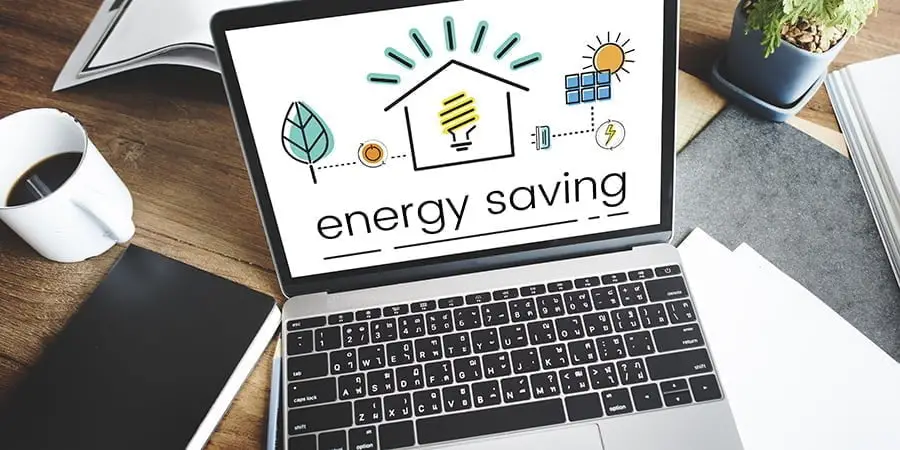Discover how you can save money and reduce your carbon footprint by taking advantage of energy-efficient window tax credits and incentives in this informative blog post.
There are actually tax credits and incentives available for homeowners who choose to upgrade their windows to more energy-efficient options. Not only can these upgrades save you money in the long run by reducing your energy bills, but they also help reduce our carbon footprint.
In this blog post, I’ll be sharing all of the information you need to know about these tax credits and incentives so that you too can save money while going green with your window choices. So grab a cup of coffee (or tea!) and let’s get started!
Understanding Window Tax Credits

Now that we understand the importance of energy-efficient windows, let’s dive into the specifics of tax credits and incentives. The federal government offers a tax credit for homeowners who make certain energy-efficient upgrades to their homes, including windows.
This credit can be up to 10% of the cost (not including installation) with a maximum amount of $200 for windows. You can use the Taxcaster tool from TurboTax to get a better idea on how this credit will impact your overall tax obligation. It’s important to note that not all energy-efficient window options qualify for this tax credit.
To be eligible, your new windows must have a U-factor and Solar Heat Gain Coefficient (SHGC) rating below certain levels set by ENERGY STAR® guidelines. Some states offer their own incentives or rebates on top of these federal credits.
It’s worth doing some research in your state or consulting with a professional window installer to see what additional savings you may be eligible for. By taking advantage of these available tax credits and incentives when upgrading your home’s windows, you can save money while also reducing your carbon footprint – it’s truly a win-win situation!
Types of Energy-Efficient Windows

Now that we know the benefits of upgrading to energy-efficient windows, let’s take a closer look at the different types available. The most common options are double-pane and triple-pane windows.
Double-pane windows have two panes of glass with an insulating gas in between them. This design helps reduce heat transfer through the window, making it more energy-efficient than single-pane windows.
Triple-pane windows take things one step further by adding a third pane of glass and another layer of insulating gas. While they may be more expensive upfront, they offer even greater energy savings and can help reduce outside noise as well.
Another option is low-emissivity (low-e) coatings on window glass. These coatings reflect infrared light while still allowing visible light to pass through, helping keep your home cooler in summer months and warmer during winter months.
No matter which type you choose, upgrading to energy-efficient windows can make a significant impact on both your wallet and our planet’s health by reducing carbon emissions from heating or cooling systems. And don’t forget about those tax credits! By choosing these eco-friendly upgrades for your home improvement project this year could mean big savings come tax season next year!
Federal Tax Incentives

One of the most significant incentives for homeowners to upgrade their windows is the federal tax credit. This incentive was introduced as part of the Energy Policy Act in 2005 and has been extended several times since then.
As I delved deeper into this topic, I discovered that homeowners can receive a tax credit of up to 10% on their window replacement costs, with a maximum limit set at $200 for windows and $500 for doors. To qualify for this incentive, your new windows must meet certain energy efficiency standards set by ENERGY STAR®.
I couldn’t believe how much money could be saved through these federal tax credits while also reducing my carbon footprint! It’s amazing how small changes like upgrading your home’s windows can make such a big difference in both our wallets and our planet.
But it’s important to note that these incentives are only available until December 31st, so if you’re considering upgrading your home’s windows anytime soon – now is definitely the time!
In addition to federal tax credits, there may also be state or local incentives available depending on where you live. Be sure to do some research or consult with a professional before making any decisions about window replacements – it could save you even more money in the long run!
State and Local Rebates

One of the most significant incentives for upgrading to energy-efficient windows is state and local rebates. These programs offer homeowners a financial incentive to make eco-friendly upgrades, including window replacements.
In my research, I found that many states have their own rebate programs in place. For example, California offers up to $2 per square foot for replacement windows that meet certain energy efficiency standards.
Similarly, New York State has a program called “EmPower New York” which provides free or reduced-cost energy efficiency improvements for eligible low-income households.
These rebates can vary depending on where you live and what type of window you choose to install. However, they are an excellent way to offset some of the costs associated with upgrading your home’s windows while also reducing your carbon footprint.
As someone who cares about both saving money and protecting our planet’s resources, these state and local rebate programs were music to my ears! It was reassuring knowing that there are options available beyond just federal tax credits when it comes time for me (and other homeowners) to upgrade our homes’ windows.
ENERGY STAR® Certification

One of the most important things to look for when shopping for energy-efficient windows is ENERGY STAR® certification. This certification means that the window has been independently tested and verified to meet strict energy efficiency guidelines set by the U.S. Environmental Protection Agency (EPA).
As I continued my research, I discovered that choosing ENERGY STAR® certified windows can not only help reduce your carbon footprint but also qualify you for tax credits and incentives from both federal and state governments. These incentives can range from a few hundred dollars up to thousands of dollars depending on where you live.
I was amazed at how much money homeowners could save simply by making this one small change in their homes. And as someone who cares deeply about our planet, it was heartening to see that there are tangible ways we can all make a difference while also saving money.
So if you’re considering upgrading your home’s windows, be sure to look out for those with ENERGY STAR® certification – not only will they help save you money in the long run but they’ll also contribute towards creating a more sustainable future!
Cost Savings Analysis

After discovering the tax credits and incentives available for energy-efficient windows, I was curious about just how much money I could save by making this upgrade. So, I decided to do a cost savings analysis.
Firstly, it’s important to note that the amount of money you can save will depend on various factors such as your location and climate. However, on average, homeowners can expect to see a reduction in their energy bills by up to 15% when upgrading from single-pane windows.
For example: Let’s say your monthly energy bill is $200. By upgrading from single-pane windows (which typically have an R-value of 1) to double-pane or triple-pane options (with R-values ranging from 2-10), you could potentially reduce your monthly bill by $30 or more! That may not seem like much at first glance but over time those savings add up quickly!
With tax credits and incentives available for these upgrades – including federal tax credits worth up to $500 – the initial investment becomes even more affordable.
Upgrading your home’s windows not only helps reduce our carbon footprint but also saves you money in the long run through reduced energy bills and potential tax benefits. It’s definitely worth considering if you’re looking for ways to go green while keeping some extra cash in your pocket!
Application Process Tips

Now that you know about the tax credits and incentives available for energy-efficient windows, it’s time to start thinking about the application process. Applying for these programs can seem daunting at first, but with a little bit of preparation and organization, it can be a smooth process.
Firstly, make sure you have all of your paperwork in order. This includes any receipts or invoices from purchasing and installing your new windows as well as any necessary forms required by the program.
Next, double-check that you meet all eligibility requirements before submitting your application. Some programs may have specific criteria such as income limits or geographic location restrictions.
It’s also important to keep track of deadlines so that you don’t miss out on any potential savings. Many programs have limited funding available each year which means applications are accepted on a first-come-first-served basis until funds run out.
Lastly, don’t hesitate to reach out to program representatives if you need assistance with filling out forms or understanding eligibility requirements. They’re there to help!
By following these tips and staying organized throughout the application process, homeowners can take advantage of tax credits and incentives while making their homes more energy-efficient – saving money while going green!
Related Stories
- Energy-efficient Window Rebate Programs: Your Guide to Saving Money
- Energy Star-rated Windows: A Shining Example of Efficiency
- Benefits of Energy-efficient Windows: Why They’re Worth the Investment
- Cost-effectiveness of Energy-efficient Windows: Breaking Down the Numbers
- Case Studies of Energy-efficient Window Projects: Success Stories to Inspire
Recap
